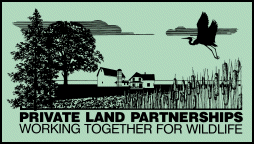 |
|
INTRODUCTION TO
WETLAND
MANAGEMENT
|
Glaciers, melting nearly 12,000 years ago, left behind raw materials--water, lowlands, and poorly-drained soils--to form up to 11 million acres of
wetlands in Michigan. This total was nearly one-third of the state's land mass. In the
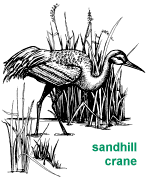 fewer than 200 years since European settlers first arrived, between 35 to 50 percent of Michigan's wetland acres have been drained, filled, or otherwise altered. Much of the loss occurred through efforts to increase agricultural production on these rich soils, but other wetlands were filled to make room for development. The greatest amount of loss has occurred in southern Michigan where some counties have experienced a loss of more than 75 percent. This loss is not limited to Michigan. It is estimated that in 1780 there were 221 million acres of wetlands in the continental United States. Today, only about 47 percent remain. During the 1980s, wetland loss through draining or filling continued at an annual estimated rate of 290,000 acres. While the rate of loss has decreased in recent years, the goal of "no net loss" is not yet a reality. fewer than 200 years since European settlers first arrived, between 35 to 50 percent of Michigan's wetland acres have been drained, filled, or otherwise altered. Much of the loss occurred through efforts to increase agricultural production on these rich soils, but other wetlands were filled to make room for development. The greatest amount of loss has occurred in southern Michigan where some counties have experienced a loss of more than 75 percent. This loss is not limited to Michigan. It is estimated that in 1780 there were 221 million acres of wetlands in the continental United States. Today, only about 47 percent remain. During the 1980s, wetland loss through draining or filling continued at an annual estimated rate of 290,000 acres. While the rate of loss has decreased in recent years, the goal of "no net loss" is not yet a reality.
People often think of a wetland as an area that floods, or at least has soggy soils, throughout the growing season. They often picture a specific, isolated area such as a cattail
marsh or a wooded swamp. However, there is much more to
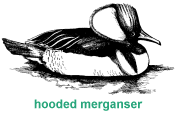 consider and there are many different types of wetlands. Wetlands are often transitional zones between dry
upland sites such as old fields and forests and open-water areas such as lakes and rivers. Most wetlands have three things in common: (1) water at or near the surface some time of the year (2)
hydric soils, and (3) wetland vegetation. consider and there are many different types of wetlands. Wetlands are often transitional zones between dry
upland sites such as old fields and forests and open-water areas such as lakes and rivers. Most wetlands have three things in common: (1) water at or near the surface some time of the year (2)
hydric soils, and (3) wetland vegetation.
The distribution, movement, amount, and seasonal availability of water influences wetland systems. Wetlands have enough water on or near the ground surface to affect the soils and the type of plants that can grow there. Sites with soggy, saturated soils but no standing water can also be wetlands. A wetland does not have to be "wet" all of the time--only during part of the year. The presence of water results in a lack of oxygen in spaces between soil particles. Wetland or "hydric" soils develop under such saturated conditions, and wetland or "hydrophytic" vegetation, grows in the moist soil.
Wetland Values
Some people view wetlands as wastelands, but this belief is far from true. All Michigan citizens, whether they own land or not, benefit from wetlands, which are some of our most valuable natural resources. Wetlands provide recreational opportunities for birdwatchers, hunters, hikers, photographers, canoeists, anglers, and other outdoor enthusiasts. Wetlands are among the most biologically diverse and productive landscape cover types. Acre for acre, the biomass or living material produced on marshlands is four times that of grasslands and three times that of cropland. Production in marshlands can equal or even exceed that in tropical forests.
 Wetlands provide habitat for thousands of species of fish, insects, amphibians, reptiles, birds, and mammals. Nearly 35 percent of the nation's rare wildlife species are located in wetlands or are dependent on them. The Mitchell's satyr butterfly, for example, is a rare Michigan butterfly typically only found in prairie fens. Mammals (muskrats, mink, and beavers), waterfowl (ducks and geese), shorebirds (plovers and sandpipers) wading birds (herons and rails), amphibians (salamanders, frogs, and toads), and insects (dragonflies and mayflies) are examples of the host of wild creatures raised in and around wetlands. In addition, muskellunge and northern pike spawn in wetlands. Many species of wildlife use wetlands along with other habitats. Wetlands provide habitat for thousands of species of fish, insects, amphibians, reptiles, birds, and mammals. Nearly 35 percent of the nation's rare wildlife species are located in wetlands or are dependent on them. The Mitchell's satyr butterfly, for example, is a rare Michigan butterfly typically only found in prairie fens. Mammals (muskrats, mink, and beavers), waterfowl (ducks and geese), shorebirds (plovers and sandpipers) wading birds (herons and rails), amphibians (salamanders, frogs, and toads), and insects (dragonflies and mayflies) are examples of the host of wild creatures raised in and around wetlands. In addition, muskellunge and northern pike spawn in wetlands. Many species of wildlife use wetlands along with other habitats.
Wetland plants are important as they stabilize soils and reduce erosion. Wetlands act as huge sponges to store water, which helps to reduce flood damage. The water then percolates back into the earth where it helps to recharge the ground water supply and/or maintain water levels in streams and rivers. A one-acre wetland holding water to a depth of one foot, will store 330,000 gallons of water.
Wetlands function as nature's kidneys to filter pollutants and sediments from surface water. They capture and slow runoff water in their thick tangle of plants. When water is slowed, pollutants and sediments drop out of suspension. Wetland
organisms intercept nutrients and pollutants, trapping them in wetland plants or substrates. Although too many pollutants can damage them, wetland plants also help to circulate and reuse nitrogen, phosphorus, and other essential nutrients. Many local governments have used this phenomenon to their advantage, constructing wetlands to filter treated wastewater and reducing the overall cost of treatment operations.
Marsh hay, wild rice, blueberries, cranberries, timber, furbearers, and fish are examples of products with economic value that wetlands provide. For this reason, farmers, trappers, fishermen, and others that rely on wetlands for income must exercise care to avoid degrading them while harvesting their products.
Types of Wetlands
Wetlands vary greatly depending on how much water is present, how long water is present, how the water got there, the type of soil, and the kinds of vegetation present. All wetlands, regardless of size and water depth, provide important wildlife habitat. Additional chapters in this section explain the types of wetlands in more detail and provide suggestions for protecting and managing them.
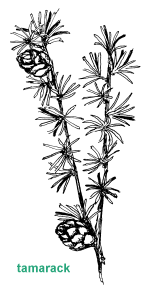 Swamps have saturated soils, may have standing water during part of the year, and are dominated by
water-tolerant trees such as silver maple, cottonwood, black ash, or tamarack. Buttonbush, alder, willow, and red-osier dogwood are shrub species that often grow in swamps. Types of swamps include bottomland forests on
floodplains, conifer swamps, and dense shrub swamps. Swamps have saturated soils, may have standing water during part of the year, and are dominated by
water-tolerant trees such as silver maple, cottonwood, black ash, or tamarack. Buttonbush, alder, willow, and red-osier dogwood are shrub species that often grow in swamps. Types of swamps include bottomland forests on
floodplains, conifer swamps, and dense shrub swamps.
Marsh is another type of wetland covered periodically by standing or slow-moving water. Soft-stemmed plants such as cattails, sedges, and rushes dominate a marsh's nutrient-rich soils.
Wet meadows, sedge meadows, and wet prairies are similar to marshes in that they also contain grasslike vegetation. However, these wetlands typically have only seasonally saturated soils and little or no standing water.
Seasonal wetlands are shallow, temporary wetlands that can have standing water from late winter through early spring. Examples are
seeps, which usually provide a year-round source of water, and vernal pools, which vary in size from a few square feet to over an acre. These wetlands can be important for breeding and migrant
waterfowl, amphibians, and other wildlife.
Bogs and fens are wetlands with a thick accumulation of organic matter called
peat. The acidic water of a
bog is nutrient-poor because the bog is fed by rain water. Acid-loving plants include sphagnum moss, blueberries, and tamarack. “Insect-eating” plants such as pitcher plant and sundew are also found only in bogs and
fens. Fens are somewhat rare in Michigan. Unlike bogs, they are fed by
groundwater that has passed through calcium and manganese rich mineral soils. Fens are typically more nutrient-rich than bogs, they support sedges, rushes, and some shrubs.
Wetland Indicators
Some wetlands, such as swamps and marshes, are obvious to most people. Others, like seasonal wetlands or bogs, are not as easily recognized because they may dry out during part of the year or simply do not look very wet. Remember that all wetlands have three things in common and the presence of these may indicate that you have a wetland on your property:
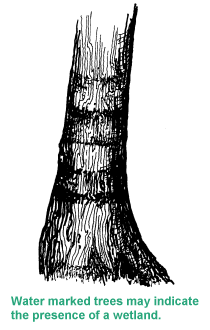 Evidence of Hydrology: Evidence of Hydrology:
- Standing or flowing water for seven or more consecutive days during the growing season.
- Waterlogged soil: Determined by digging a 12-inch-deep hole and then checking for water in the hole; or by looking for soil that glistens with water; or squeezing water from a handful of soil.
- Water marks on trees or small piles of debris lodged in trees or piled against other objects in the direction of water movement near river systems.
Wetland Soils:
- Check with your County Conservation District (CD) for a soil survey and a list of soil types that occur in wetlands.
- Check for a blue or gray color about a foot below the surface. Your local CD office may describe other color characteristics to look for.
- Look for organic matter such as peat or muck.
- Smell the soil for an odor like rotten eggs.
Wetland Vegetation:
More than 5,000 different plants grow in wetlands. Some common wetland plants to look for include:
-
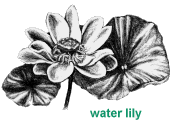 Water lilies, cattails, arrowhead, smartweed, pondweed and other plants in standing water. Water lilies, cattails, arrowhead, smartweed, pondweed and other plants in standing water.
- Grasses such as reed canary grass, barnyard grass, and prairie cordgrass, or rushes and sedges.
- Trees such as willow, white cedar, cottonwood, silver and red maple, green ash, tamarack, pin oak, and elm.
- Shrubs such as buttonbush, Michigan holly, and red-osier dogwood.
Are There Former Wetlands on my Property?
If you can answer "yes" to the following questions, it is quite possible that you may have a drained wetland that can be restored:
- Are there depressions or low areas (potholes) on your property that are drained with tile or ditches?
- Are vegetation changes readily visible in the field? For example, do you have patches of stressed or drowned crops or other vegetation?
- Do patches of wetland plants such as cattails, sedges, smartweeds, or red-osier dogwood occur in your fields?
Should I Protect, Enhance, or Create a Wetland?
Wetlands should be preserved whenever possible. Natural wetlands, which developed over thousands of years, are hard to duplicate because of their complexity. Preserving those that are not currently being drained or altered by humans is often the best way to maintain existing wetland functions, including wildlife habitat. Recognize, however, that wetlands are a dynamic system that will change with time. Change may be positive or negative.
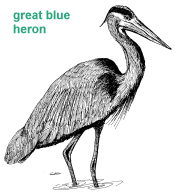 Those wetlands that have been dredged, drained, filled, or otherwise altered offer an opportunity for
restoration. Often, blocking a ditch or removing a portion of a
field tile line may be all that is needed to restore water, which will help to germinate aquatic plant seeds lying dormant in the soil. Remember, a restored wetland need not hold water all year long; in fact, many do not. Temporary wetlands are usually less than two feet deep and often retain water for only a few weeks each spring. Those wetlands that have been dredged, drained, filled, or otherwise altered offer an opportunity for
restoration. Often, blocking a ditch or removing a portion of a
field tile line may be all that is needed to restore water, which will help to germinate aquatic plant seeds lying dormant in the soil. Remember, a restored wetland need not hold water all year long; in fact, many do not. Temporary wetlands are usually less than two feet deep and often retain water for only a few weeks each spring.
"Enhancement" of an existing wetland can be done to improve wetland functions. However, this can be difficult, and improving surrounding uplands may be more effective. Enhancement efforts may include varying water depths; mowing, burning, or planting; removing nuisance plants; adding nest structures and other habitat improvements.
Creating wetlands can also help wildlife, but this process may be both difficult and expensive depending on site characteristics. Often created wetlands do not function correctly and result with failed projects due to incorrect soils, vegetation, etc. It is hard to duplicate the complexity of wetland systems. Remember that wetlands can influence, and are influenced by, what goes on around them. The type and amount of vegetation around a wetland can greatly affect its value for wildlife, and how the wetland performs other functions. Having clear goals along with a site-specific plan are the keys to successful habitat management.
What Regulations Apply?
Because of their importance, wetland manipulations are regulated by local, state, or federal laws. Check with your township or other local government office to see if there is a wetland protection ordinance that applies to your property. State and some federal regulations can be addressed by contacting the
Michigan Department of Environ-mental Quality
(MDEQ), Land and Water Management Division. This agency coordinates the review of project proposals with various divisions within MDEQ, the
Michigan Department of Natural Resources
(MDNR), and federal agencies such as the U.S. Army Corps of Engineers, if required. Further, the
Natural Resource Conservation Service also administers federal wetland regulations for landowners who participate in U.S. Department of Agriculture programs. Allow enough time for permit application and approval so as not to upset the time frame for your project.
In summary, wetlands are very complex systems that offer a variety of benefits to both people and wildlife. There are many types of wetlands that are each dependent on local
hydrology, hydric soils, and wetland vegetation. Wetlands should be protected or restored whenever possible. As with any other management activity, prior planning helps to ensure that your goals are reached.
Last Revised: October 3, 1999
|


 fewer than 200 years since European settlers first arrived, between 35 to 50 percent of Michigan's wetland acres have been drained, filled, or otherwise altered. Much of the loss occurred through efforts to increase agricultural production on these rich soils, but other wetlands were filled to make room for development. The greatest amount of loss has occurred in southern Michigan where some counties have experienced a loss of more than 75 percent. This loss is not limited to Michigan. It is estimated that in 1780 there were 221 million acres of wetlands in the continental United States. Today, only about 47 percent remain. During the 1980s, wetland loss through draining or filling continued at an annual estimated rate of 290,000 acres. While the rate of loss has decreased in recent years, the goal of "no net loss" is not yet a reality.
fewer than 200 years since European settlers first arrived, between 35 to 50 percent of Michigan's wetland acres have been drained, filled, or otherwise altered. Much of the loss occurred through efforts to increase agricultural production on these rich soils, but other wetlands were filled to make room for development. The greatest amount of loss has occurred in southern Michigan where some counties have experienced a loss of more than 75 percent. This loss is not limited to Michigan. It is estimated that in 1780 there were 221 million acres of wetlands in the continental United States. Today, only about 47 percent remain. During the 1980s, wetland loss through draining or filling continued at an annual estimated rate of 290,000 acres. While the rate of loss has decreased in recent years, the goal of "no net loss" is not yet a reality.